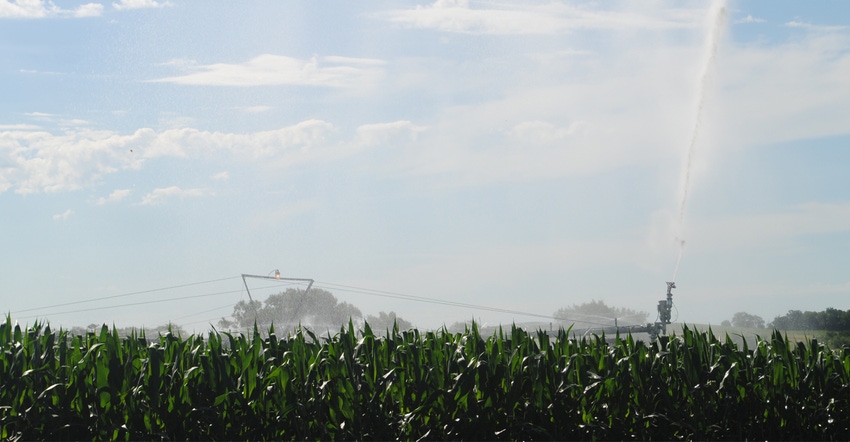
There are no free refills for farmers relating to crop inputs, except for precipitation that replenishes the soil water. The problem is, just as with the alleged “free refills” of soft drinks and coffees at restaurants, we do not know when we will get them. Thus, irrigation scheduling almost becomes a daily decision.
Steve Melvin, Nebraska Extension irrigated cropping systems educator, says the daily decision whether to turn on the irrigation system obviously needs to be made with optimization of the crop yield and returns in mind.
Getting irrigation right
This sounds simple enough, but becomes difficult when trying to keep the crop well-watered, but not overwatered — with a limited capacity to put water on the field, but wanting to delay the application as long as possible in the hope that it will rain.
Melvin sees farmers possibly throwing money down the drain — or on the field, as the case may be — by not properly scheduling their irrigations for the most benefit. To prove his point, he has reviewed data gathered by the Upper Big Blue Natural Resources District.
These data are garnered from the Upper Big Blue NRD requiring farmers to use soil water monitoring equipment in one irrigated field and turn that data over to the NRD.
Sifting through the data, about one-third of farmers apply the correct amount of water to produce top yields while minimizing deep percolation. Those findings mean that two-thirds of producers could use better management to achieve top crop yields, while also saving a little — or, in some cases, a lot — of money and water.
Plan ahead
Many of today’s irrigation systems offer the potential for automation. They can easily be operated from a smartphone or other device. Many of these systems also offer data showing the machine’s operation, providing farmers with data to analyze operational efficiency.
It is what farmers do with that data that makes the difference in optimum operation versus poor application uniformity because of low pressure.
“I think that setting the stage ahead of time, to be able to make those decisions quickly with some soil water monitoring data or irrigation scheduling system of some sort, is really important to think about ahead of time, versus when you get in the heat of the battle of keeping the crop well-watered," Melvin says. "In other words, figure out how are you going to make those decisions quickly and efficiently and not have to put on a little extra water just to make sure you’re not shorting the crop."
What worked last time, or even what worked last year, may not translate to the same plan for the 2021 growing season.
“The process can be similar year to year, but the weather conditions are always different in Nebraska,” Melvin says. “In Nebraska, we do get rain, even though last summer didn’t seem like it. In general, we get good rain — so we need to be ready to respond to supplement the rain with irrigation when and only when we need to.”
Know your capacity
Knowing how much your fields need is key, as well as how long it takes your irrigation system to provide the water. Depending on the well capacity, it can take two to seven days to supply the desired amount to a field.
In addition to knowing your irrigation system output, Melvin stresses the importance of knowing your soil’s water-holding capacity. Deep loam soils found in the aforementioned Upper Big Blue NRD provide “a big reservoir, if you will,” he says, while farmers of sandy soils won’t have that luxury, and three or four days without moisture during a hot, windy period may cause crop harm.
Keeping an eye on the skies is also worthwhile so farmers can plan their irrigation schedules on the weather forecast, but be prepared to turn the pivot on if Mother Nature fails to come through. For farmers averse to doing their own irrigation scheduling, Melvin suggests turning to crop consultants or other irrigation scheduling professionals.
Read more of Melvin’s irrigation articles at cropwatch.unl.edu.
About the Author(s)
You May Also Like






